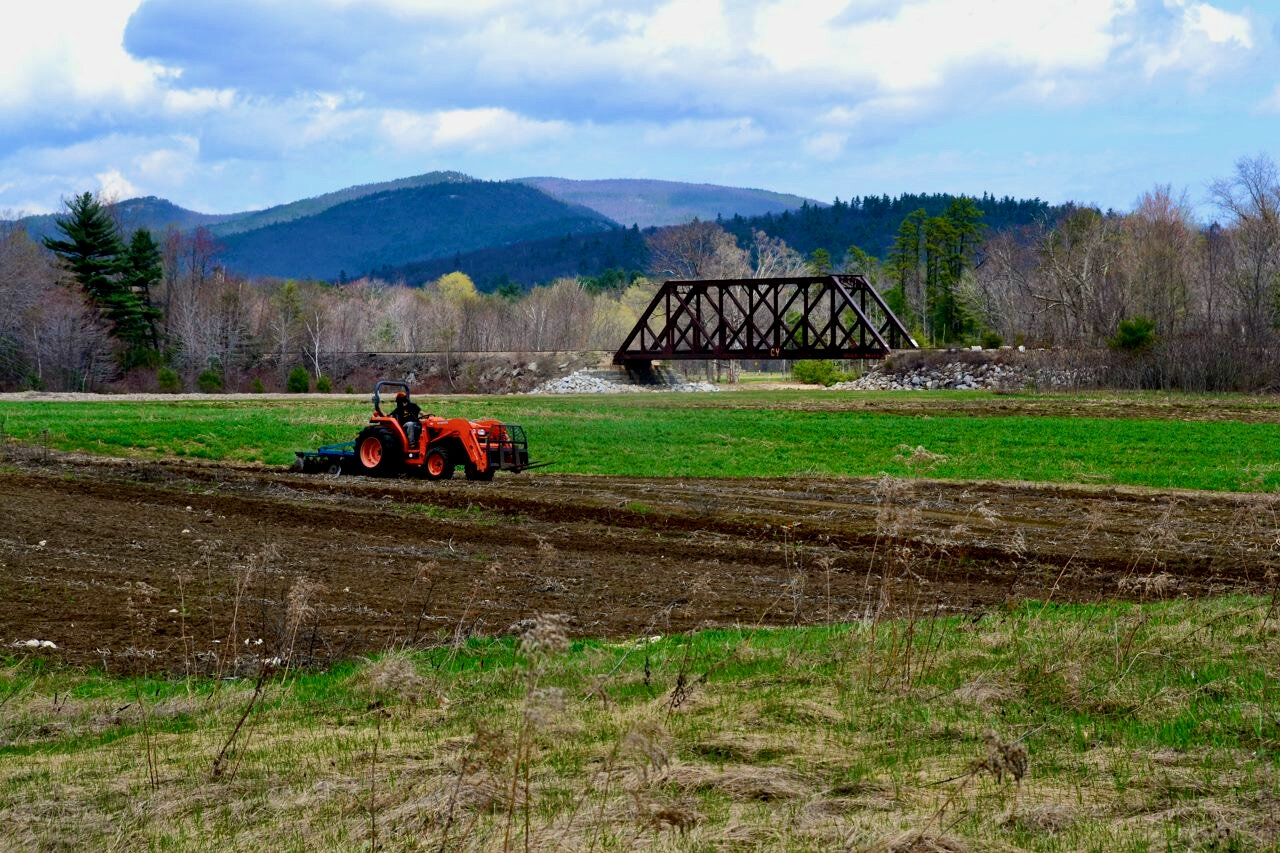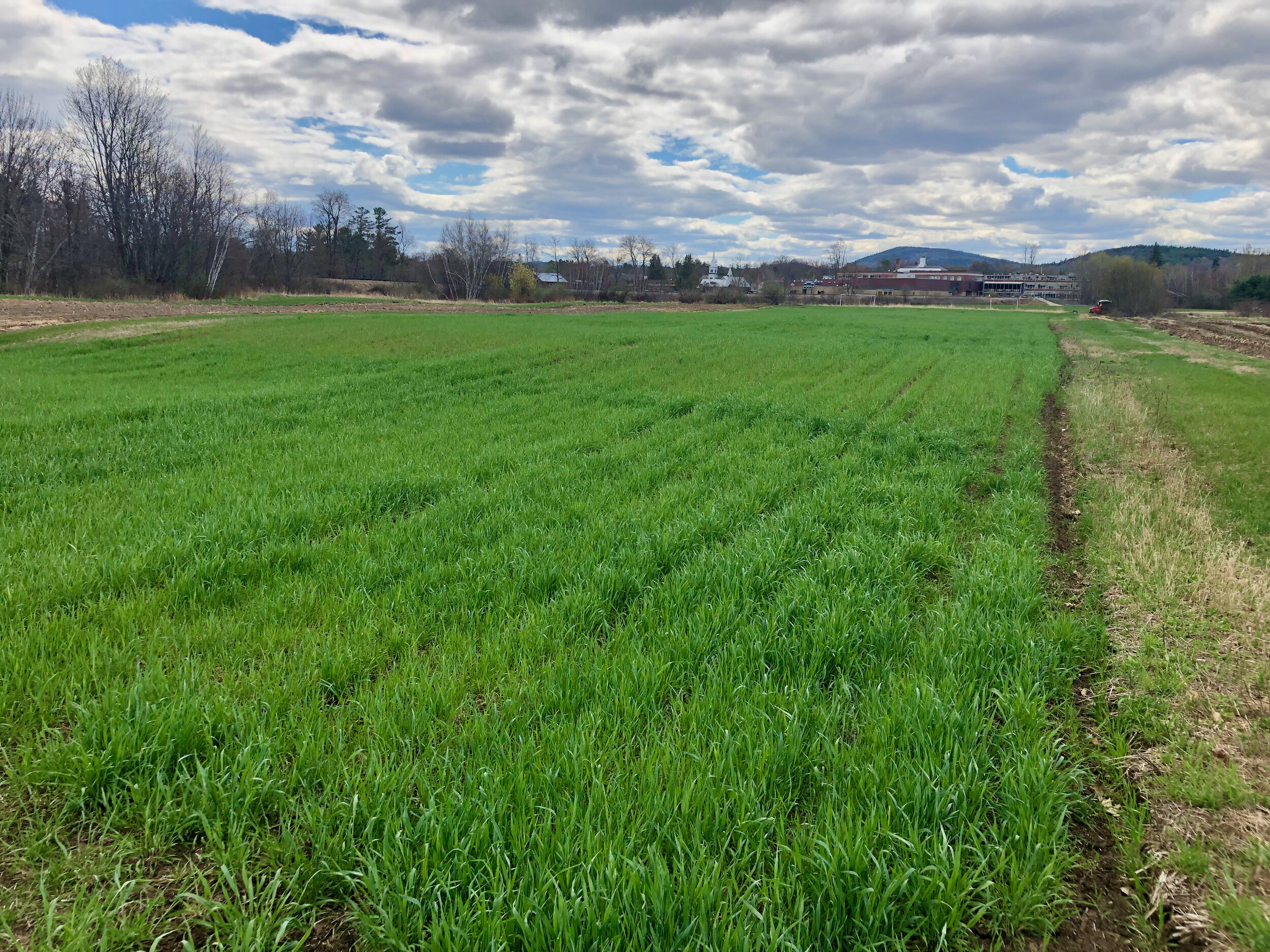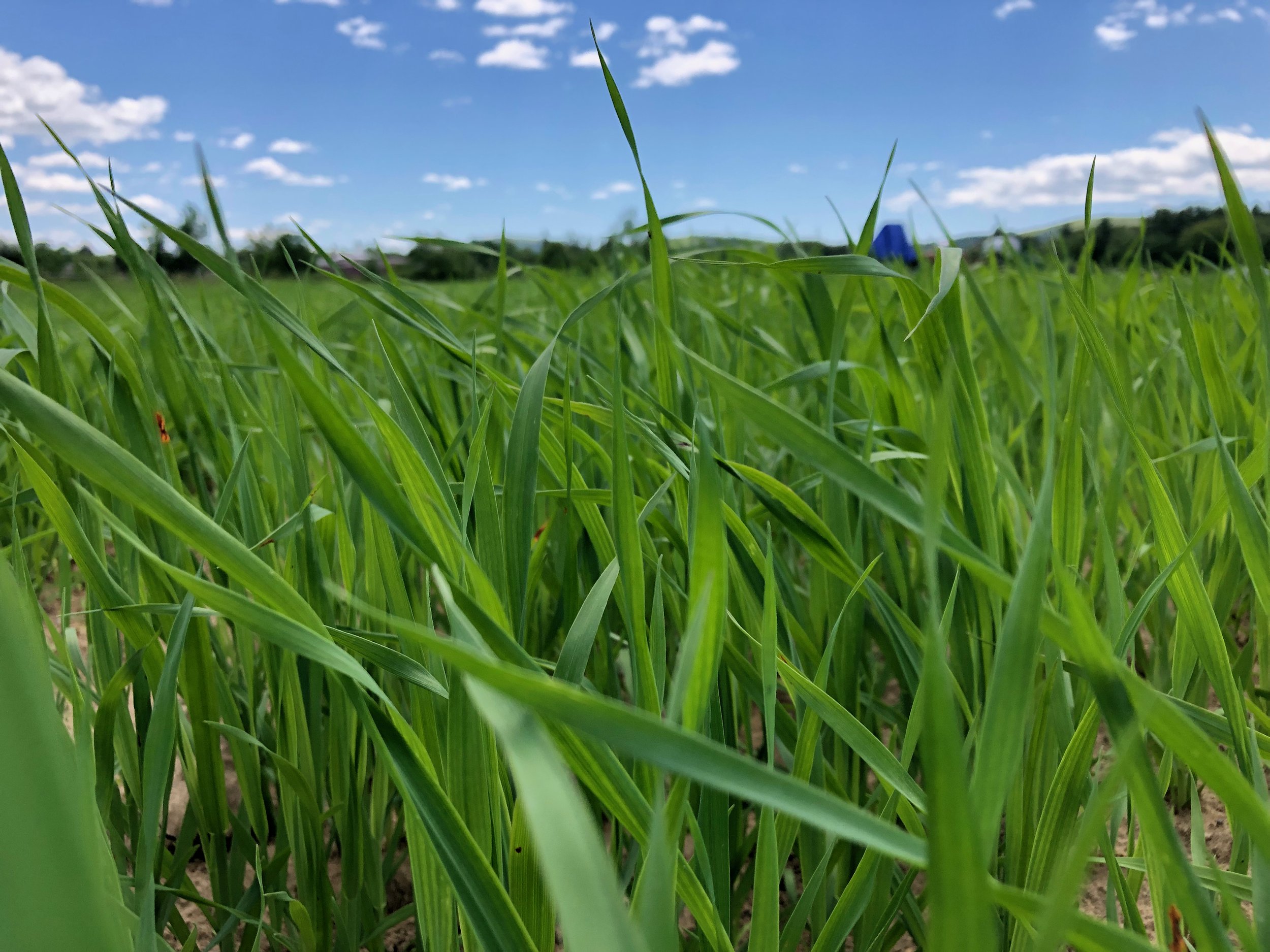
Our growing practices
Fertility
Fertility wise we rely on pelletized chicken manure, fish hydrolysate, Woodash, and green manure from cover crops. The pelletized chicken manure is OMRI listed and comes from an organic egg farm in NY state called Kreher Family Farms. The fish hydroslate is OMRI listed and is produced in Gloucester MA by Neptunes Harvest. We use wood ash to raise the PH of the soil. Wood ash is a by product of bio power plants that burn wood chips to produce electricity. The wood ash we buy comes from Resource Management Inc (RMI) in NH and either comes out of the Tamworth or Berlin power plants.
Pest Control
We do spray when pest pressure becomes uneconomical. We rely on three products used for different situations:
PyGanic® EC 5.0 II is our “knock down” tool for situations where we have high pest pressure and need fast action. It is made from Pyrethrins which are pesticides found naturally in some chrysanthemum flowers. PyGanic is a contact killer meaning it will kill pretty much anything it touches pest wise. It will kill bees and other beneficial insects because of this we use it sparingly as a last resort.
Entrust® SC is a formulation of Spinosad. Spinosad is a natural substance made by a soil bacterium that kills certain pests. We use Entrust for control of Colorado Potato Beetles, Corn Borers, Corn Earworm, and Hornworms.
DiPel® DF is a formulation of B.T. (Bacillus thuringiensis). B.T. consists of species of bacteria that live in soil. It makes proteins that are toxic to some insects when eaten, but not others. Bt is not toxic to non-target wildlife meaning it does not kill bees. We use DiPel® DF for control of many different types of worms such as Cabbage worm, Corn Borers, Corn Earworms, and Hornworm.
Weed Control
We do not use herbicides. This means we have our hands full when it comes to controlling weeds. To control weeds we use a combination of mulching, mechanical cultivation, flame weeding and hand weeding. We would like to rely on mulching, mechanical cultivating, and flame weeding by themselves but realistically there is plenty of hand weeding to be done.
Weed Control
Turns out when you don’t use herbicides you end up spending a good amount of your time fighting weeds. It’s a good thing our favorite task is knocking back the weeds. Over the years we have fallen in love with the art of controlling weeds without the use of herbicides. A skill set almost lost with the development of herbicides.
With so many contradicting studies on whether herbicides are dangerous or not, ultimately the question is can produce be grown profitably without them. The answer is yes. To do so takes more effort and time but we think its worth it. Growing without herbicides also opens up opportunities for engineering new technologies and techniques. We have witnessed first hand, over the last ten years, a renaissance in non herbicide produce production. When we started out many of the techniques and technologies we use today had not been invented or discussed. Life would have been a little easier but we are just happy non herbicide growing has progressed to the point it has and are certain there is more improvement to come.
Cover Crops
When we first started working this ground we were more interested in soil health and cover crops than growing vegetables. Over time we became fixated on cash crop production and growing the very finest produce possible. Cover crops took a back seat to cash crops. For a few years we barely planted any cover crops. At first it didn’t seem to matter. We tilled when we wanted to and grew as much produce as possible to earn a living. All the indicators of good soil health were still present. Just about the time we started to think the cover crop idea was overemphasized, bam! We started to see a decline in soil health. Over the past few seasons we have rejuvenated our love for cover crops.
Cover crops add a layer of complexity to an already complex vocation. Its not as simple as planting a cover crop anywhere a cash crop isn't.
One has to factor in:
Life span of the cover crop.
Management of the cover crop while its growing.
Logistics of cover crop termination.
Speed in which the cover crop will break down.
Residue management of the cover crop.
What benefits are needed from the cover crop.
Cost of seed.
Will the cover crop attract unwanted insects or animals.
Do you have the correct equipment to manage the cover crop properly.
What family the cover crop is in so that crop rotations are not messed up.
Currently we are keeping it simple when it comes to cover crops. We plant oats in the spring and summer. The oats keep something growing in soils that are not cash cropped. They provide wind and water erosion protection as well as organic matter when they are incorporated back into the soil. In the fall we plant winter rye which serves the same purpose as the oats but is winter hardy.
In the future we plan to branch out in our use of cover crops. There are certainly more and better ways we can apply cover cropping to our production system. This excites us as well fall back in love with cover crops.





